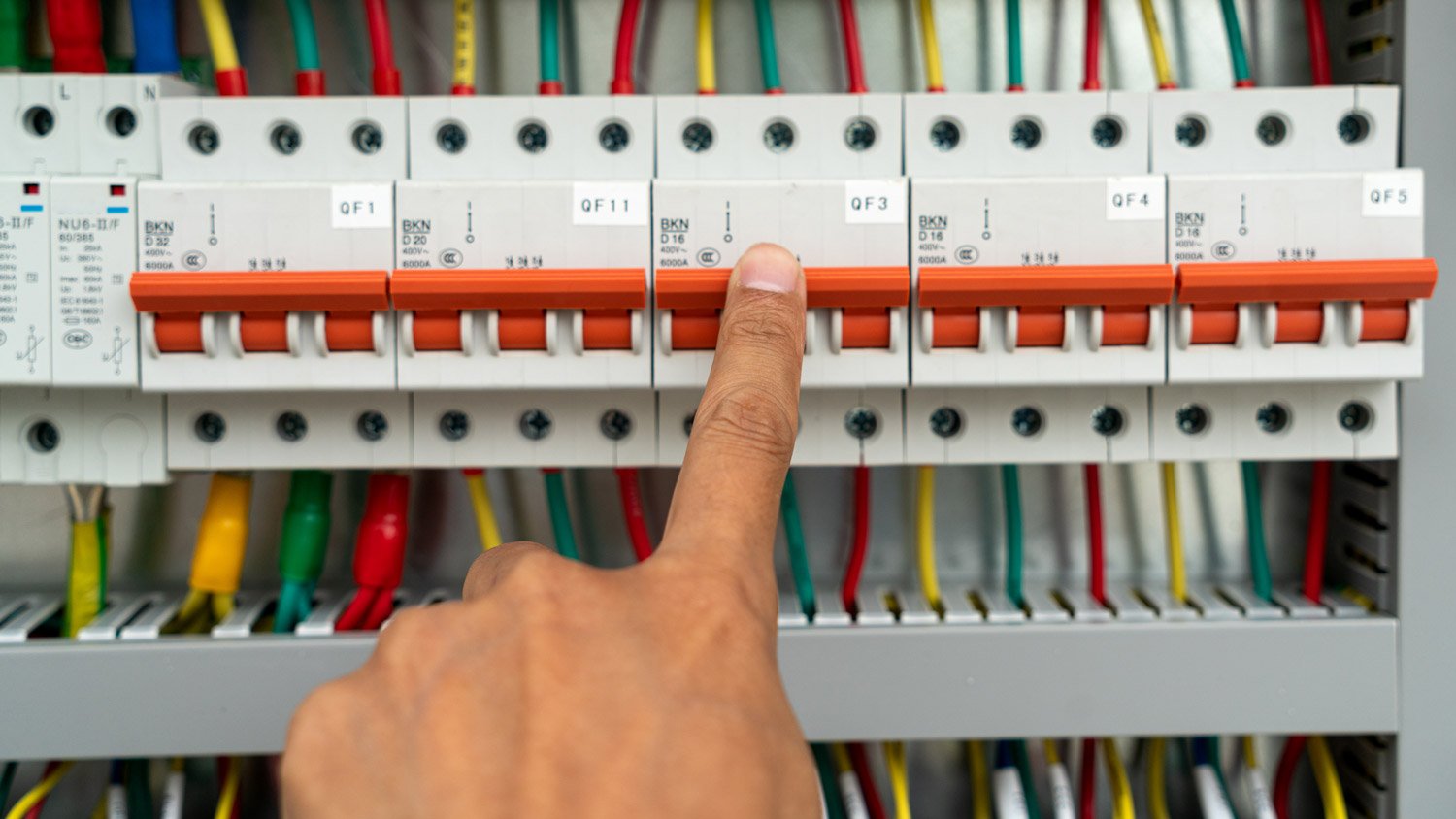
The cost to ground outlets depends on several factors. This guide will help you prepare for all of the costs involved with this project.
Major warning signs for a bad circuit breaker include frequent tripping, a burning smell, and scorch marks


A circuit breaker is a panel that controls all of the electrical systems within your home.
Visible damage, a burning odor, or frequent tripping (unexplained shut-offs) can be signs of a problem with your circuit breaker, and may signal a need for repair or replacement.
Once you’ve identified the issue, be sure to unplug all devices connected to the circuit, then perform a reset on your circuit breaker. If the issues persist, it’s time to call the professionals to diagnose the problem.
As a homeowner, your circuit breaker may not be the first thing on your mind, but this is an essential part of your home. Typically found in an electrical service panel, circuit breakers essentially control all electrical appliances in the house. But how can you tell if your circuit breaker is bad?

If you notice a burning scent coming from the electrical panel, the wires and insulation are likely overheating or something else is malfunctioning. This could mean your circuit breaker is not able to adequately protect your house from a fire, so this is a definite warning sign you should call a professional electrician in your area.
Another sign your circuit breaker is not working correctly is visible marks around the breaker, such as scorch marks or tattered wires. This typically indicates that the wiring is melted and thus failing.
Make sure you unplug anything from the circuit breaker to prevent incidents, and call a professional as soon as possible.
A circuit breaker that trips means that the circuit shuts itself off after recognizing a malfunction, consequently preventing dangerous problems. In fact, a circuit breaker that trips is actually protecting you by turning itself off to fend off potential fires.
There are a few issues that may cause a breaker to trip frequently, like an overloaded circuit or shorted circuit in the home, but it may also just be time for a replacement. Calling an electrician will help you determine whether you can fix the problem, if you should get a new circuit breaker, or if there is something more serious going on with the wiring in your home.

The first thing to do after identifying a circuit breaker issue is to figure out which circuit the breaker is protecting. Your circuit breaker should have a label that clearly indicates this.
Next, switch the breaker into the “OFF” position and unplug or disconnect everything from that circuit. This is a preventative measure against electrical surges or other electrical issues occurring.
Reset the circuit breaker by switching it back into the “ON” position. Note: You should hear a click when you do this. If the circuit breaker doesn’t immediately trip, the problem was probably an overloaded circuit, which means the circuit was being used for more electricity than it could handle.
In this case, you should move some of the plugs originally in that circuit to a different one, and then reset the breaker again.
However, if the circuit breaker trips again, then the problem is either a short circuit or a bad breaker. A short circuit means there is some sort of fault in the wiring. If the circuit breaker trips immediately, this is a sign to call a professional electrician and diagnose the issue.
If you ignore bad circuit breaker warning signs, serious issues could arise. For instance, the circuit breaker could overheat and result in an electrical fire. Call in a professional as soon as possible to remove and replace your circuit breaker.
Various electrical appliances can cause circuit breakers to trip. This is common in older homes, where the appliances are using too much electricity.
If your circuit breaker often trips while many appliances are running, the circuit breaker is likely overloaded, posing fire hazards and indicating the need for a circuit breaker upgrade.
From average costs to expert advice, get all the answers you need to get your job done.

The cost to ground outlets depends on several factors. This guide will help you prepare for all of the costs involved with this project.

Rewiring a house can be a complex project but don’t let it catch you off guard. Read this to plan ahead and discover the cost to rewire a house.

The average cost to install an electrical outlet is $133 to $296 each. This guide explains what factors impact the total cost of installing an outlet.

Today’s polarized plugs and outlets have a hot and neutral side, which is important for any receptacle wiring. Here’s what that means, why it happened, and how to take advantage of it.

Learn how to wire an outlet switch combo receptacle in various ways to adapt an existing wired location for several applications.

Learn how to install a C-wire as part of your smart thermostat installation and discover other options that may work for your HVAC wiring.